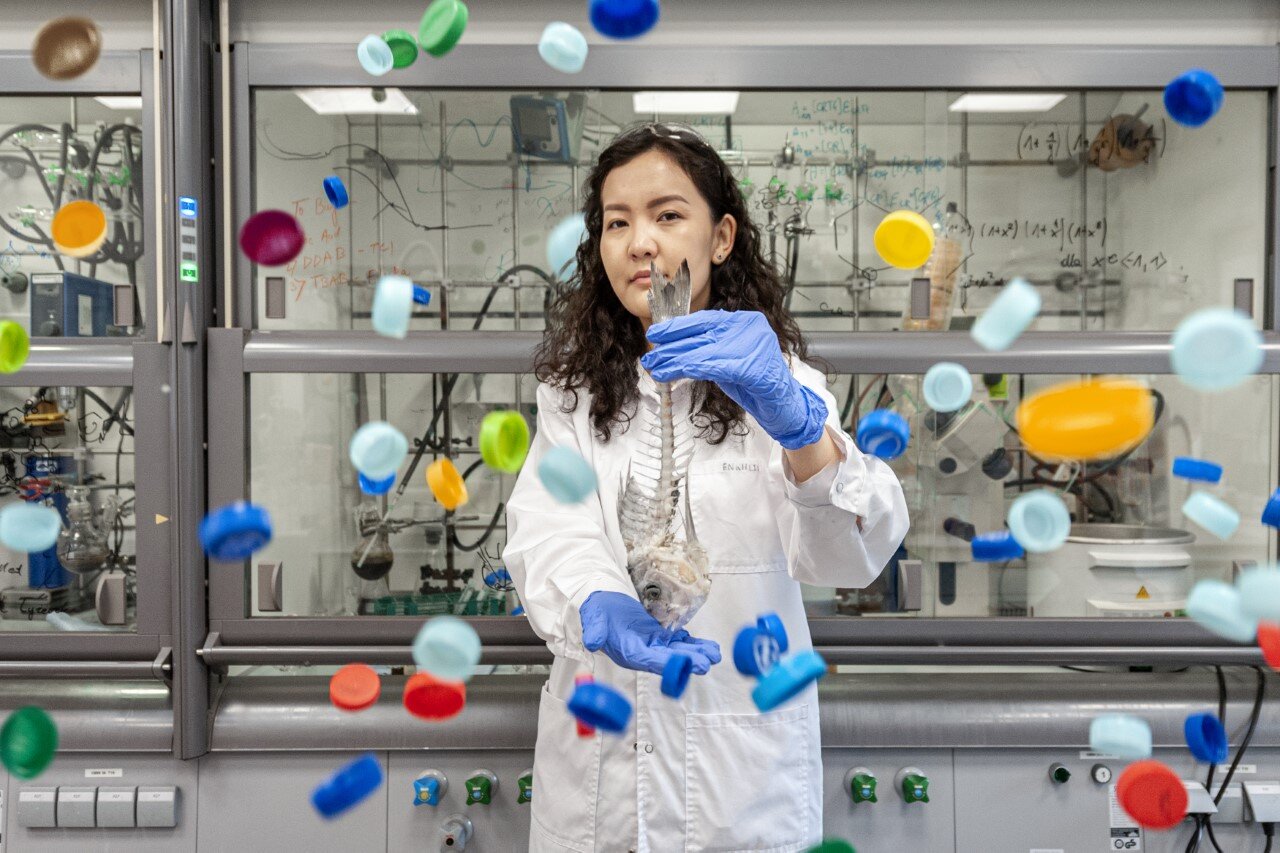Polymer-based materials are almost everywhere, reaching even the deepest regions of the oceans, and their global production outpaces recycling, leading to the generation of tremendous amounts of water pollution with microplastics. These tiny polymer particles not only release chemicals but also reduce the number of bacteriophages.
Recently, researchers from the Institute of Physical Chemistry, Polish Academy of Sciences, led by Prof. Jan Paczesny, explored this field, showing the scale of the problem. In their work, they studied the effects of microplastics on the infectivity of bacteriophages in an aqueous environment.
It is challenging to imagine a world without plastic-based products. Synthetic materials are used in every field of life, from textiles, food packaging, and pharmacy, to materials used in the building industry. They are an indispensable part of life because of their multi-functionality. Plastics are lightweight, easily shaped, resistant to environmental conditions, and cheaper than many other synthetic materials, which makes them so popular.
However, they are not necessarily friendly to health and the environment, especially as plastic particles get smaller. Getting to the water reservoirs, synthetic materials are easily mechanically fragmented into even smaller pieces. They can also undergo degradation under UV radiation, chemical degradation, or even biodegradation, so small plastic particles flow in the aqueous reservoirs for a very long time. Such microplastics with a diameter below 5 mm or smaller pieces like nanoplastic (even a million times smaller than microplastic) are everywhere, even in tap water or the milk of mammals.
When these tiny plastic particles get into the environment, they become a serious problem for aquatic systems like lakes, rivers, seas, and even oceans, where they slowly decompose, releasing many harmful chemicals. Unfortunately, the list of them is quite long, starting from plasticizers, pigments, and flame retardants to even heavy metal ions that can cause many disorders or diseases. What is more, the surface of microplastic adsorbs organic compounds that work as food storage for microbial biofilms, leading to an imbalance between the particular groups of microorganisms forming biofilms, including bacteriophages.
More information:
Enkhlin Ochirbat et al, Heteroaggregation of virions and microplastics reduces the number of active bacteriophages in aqueous environments, Journal of Environmental Quality (2023). DOI: 10.1002/jeq2.20459
Prof. Paczesny says, “The effect of leachables was measured upon exposure of phages not to particles themselves but to the buffer preincubated with microplastics. A double-overlay plaque counting method was used to assess phage titers. We employed a classical linear regression model to verify which physicochemical parameters (65 variables were tested) govern the decrease of phage titers.”
The research study focuses on the correlation between the number of phages and the physicochemical properties of microplastics as an introduction to the broad field of ecotoxicological studies. As only daily, the bacteriophages terminate up to 40% of bacterial biomass, they play a vital role in the maintenance of homeostasis in the bacterial community in all environments, from Big Blue to wastewaters. Once the microplastic gets into the environment, its surface hosts the biofilm layer, which is a booster for microorganisms to colonize, and here is the problem.
Transported through the microplastics, many bacterial strains can colonize uncontrollably. As an effect, they can affect ecosystems in certain aquatic zones without the control of the phages, affecting not only animals but also humans. What does it mean in practice? Let’s take a look at the seafood. Microplastic reaches the digestive tract of fish and other animals, disturbing the gut biota as well as forming aggregates in other tissues. Therefore, when we consume them, such microplastic gets into our digestive system, and with a decrease in the size of these polymer pieces, it can also aggregate in the body, which can lead to severe health issues. It sounds scary, but from the findings of scientists from IPC PAS, it is clearly seen that the growing pollution of the environment with microplastics can have a dramatic effect on global ecosystems.
The work on the microplastic effect on phages is published in the Journal of Environmental Quality.
Citation:
Studying the effects of microplastics on the infectivity of bacteriophages in an aqueous environment (2023, May 12)
retrieved 12 May 2023
from https://phys.org/news/2023-05-effects-microplastics-infectivity-bacteriophages-aqueous.html
This document is subject to copyright. Apart from any fair dealing for the purpose of private study or research, no
part may be reproduced without the written permission. The content is provided for information purposes only.
Denial of responsibility! TechCodex is an automatic aggregator of the all world’s media. In each content, the hyperlink to the primary source is specified. All trademarks belong to their rightful owners, and all materials to their authors. For any complaint, please reach us at – [email protected]. We will take necessory action within 24 hours.

Jessica Irvine is a tech enthusiast specializing in gadgets. From smart home devices to cutting-edge electronics, Jessica explores the world of consumer tech, offering readers comprehensive reviews, hands-on experiences, and expert insights into the coolest and most innovative gadgets on the market.


